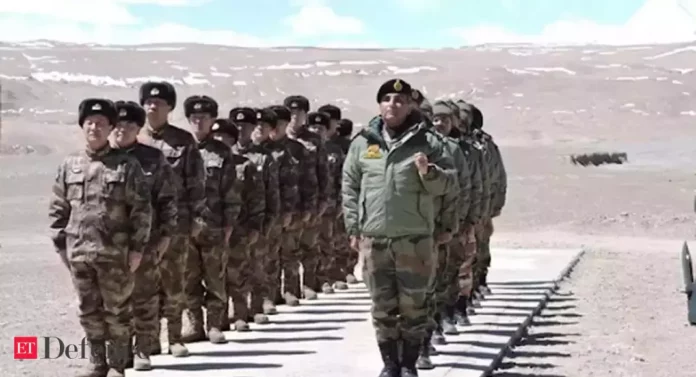Indian and Chinese Army Officers Engage in Talks at Ladakh’s Daulet Beg Oldi Sector to Address LAC Challenges.
In a significant development aimed at addressing the longstanding border issues, high-ranking officers from the Indian and Chinese military met at the scenic location of Ladakh’s Daulet Beg Oldi sector. These talks came in the wake of recent high-level military dialogues between the corps commanders of both nations, reflecting a commitment to finding a resolution amidst the ongoing tensions along the Line of Actual Control (LAC) in eastern Ladakh.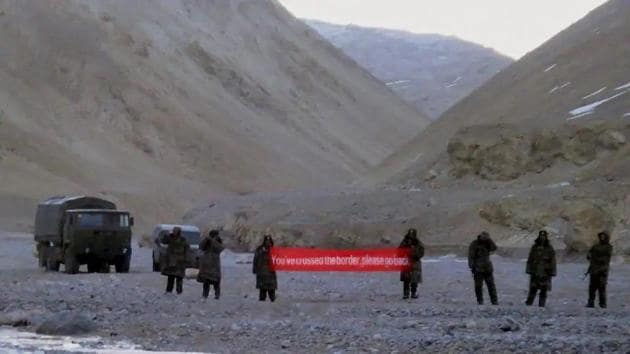
The division commander-level officers from both sides convened on Tuesday to engage in discussions pertaining to the outstanding border disputes between India and China. These disputes have persisted for over three years, resulting in strained relations and increased military presence in the region. The officials, who spoke on condition of anonymity, revealed that dialogue at the division commander and brigade commander levels regarding border issues is a customary practice.
It is worth noting that the 18th round of corps commander-level talks held on April 23 failed to yield a breakthrough. However, both the Indian Army and the Chinese People’s Liberation Army (PLA) expressed their commitment to maintaining security and stability along the LAC. They also agreed to maintain close contact, continue dialogue through military and diplomatic channels, and work towards finding a mutually agreeable resolution for the remaining issues.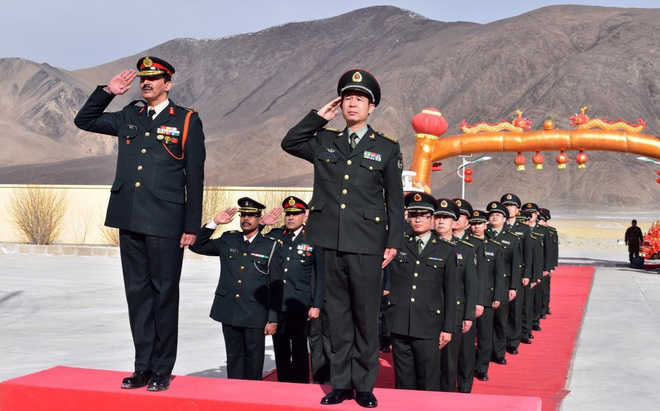
Persistent Deployment and Unresolved Challenges: Troop Numbers and Key Negotiation Points
Despite the disengagement efforts that took place in the Galwan Valley, Pangong Tso, Gogra (PP-17A), and Hot Springs (PP-15) through four rounds of negotiations, both the Indian and Chinese armies still maintain a substantial deployment of over 60,000 troops each, along with advanced weaponry, in the Ladakh theatre. The challenges at Depsang in the Daulet Beg Oldi sector and Charding Nullah Junction (CNJ) in the Demchok sector remain unresolved and continue to be points of negotiation.
The issue of the LAC was also raised by the Indian Defence Minister, Rajnath Singh, during his meeting with his Chinese counterpart, General Li Shangfu, on April 27. Singh emphasized that the violation of existing agreements had negatively impacted bilateral relations, asserting that the development of India-China ties is contingent on peace and tranquility at the borders. He further stated that all outstanding issues along the LAC must be resolved in accordance with existing bilateral agreements and commitments.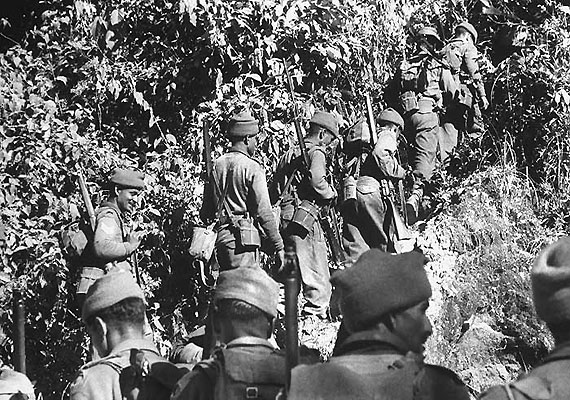
Following the talks on April 27, Lieutenant General DS Hooda (retd), former Northern Army commander, characterized Singh’s position as consistent with India’s stance. He highlighted that the ongoing standoff had strained bilateral relations and emphasized that any improvement would require disengagement and subsequent withdrawal of additional forces by the PLA. General Hooda opined that while the recent talks may not have resulted in substantial progress, it is encouraging to witness high-level political engagements, as the ultimate resolution lies in political dialogue.
As the Indian and Chinese army officers convene in Ladakh’s Daulet Beg Oldi sector, these discussions signify a concerted effort to find common ground and seek solutions to the longstanding border challenges. The ongoing dialogues, both at the military and political levels, hold the potential to pave the way for a peaceful resolution and restore stability in the region.
The meeting between the Indian and Chinese army officers at Ladakh’s Daulet Beg Oldi sector signifies a crucial step towards addressing the persistent border issues between the two nations. Against the backdrop of ongoing tensions along the Line of Actual Control (LAC) in eastern Ladakh, these talks hold immense significance in fostering dialogue and understanding between the military forces of India and China.
The division commander-level officers from both sides engaged in constructive discussions on Tuesday, with the aim of finding solutions to the outstanding border disputes that have plagued the region for more than three years. These talks followed the recent high-level military dialogues between the corps commanders of India and China, emphasizing the commitment of both nations to seek a resolution to the ongoing tensions.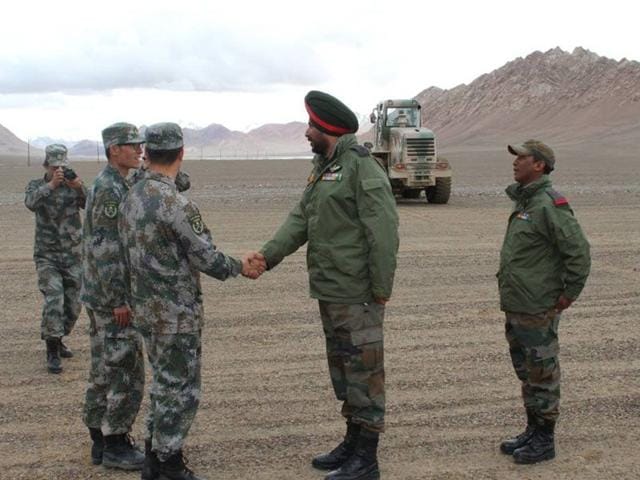
While the 18th round of corps commander-level talks on April 23 did not yield immediate outcomes, it is noteworthy that the Indian Army and the Chinese People’s Liberation Army (PLA) affirmed their shared goal of maintaining security and stability along the LAC. Both sides agreed to remain in close contact, continuing the dialogue through military and diplomatic channels, and working towards a mutually acceptable resolution to the remaining border issues.
In the broader context of border negotiations, it is essential to recognize that dialogue at the division commander and brigade commander levels on border issues is a regular practice. These interactions play a significant role in establishing communication channels and fostering a better understanding between the Indian and Chinese military officials.
Despite previous rounds of disengagement at locations such as the Galwan Valley, Pangong Tso, Gogra (PP-17A), and Hot Springs (PP-15), the substantial deployment of over 60,000 troops and advanced weaponry by both India and China in the Ladakh theatre remains a pressing concern. The challenges at Depsang in the Daulet Beg Oldi sector and Charding Nullah Junction (CNJ) in the Demchok sector continue to require careful attention and negotiation.
Political Engagement for Peace: Significance of Talks in Fostering Diplomatic Solutions
The issue of the LAC was also raised during the meeting between Indian Defence Minister Rajnath Singh and his Chinese counterpart, General Li Shangfu, on April 27. Minister Singh emphasized that the violation of existing agreements had eroded bilateral relations between the two countries. He reiterated that the development of India-China ties relies on maintaining peace and tranquility along the borders. Singh further emphasized the importance of resolving all outstanding issues in accordance with existing bilateral agreements and commitments.
The engagement at the political level serves as an essential component in the efforts to address the border challenges. The discussions between Defence Minister Rajnath Singh and General Li Shangfu reflect a commitment to resolving the ongoing standoff and improving bilateral relations. Lieutenant General DS Hooda (retd), former Northern Army commander, remarked that the high-level political contacts are vital, as the ultimate resolution of the border issue will require political dialogue.
The significance of the talks lies not only in the immediate outcome but also in their potential to pave the way for a peaceful and diplomatic resolution of the border disputes. The ongoing dialogues, both at the military and political levels, provide a platform for the exchange of ideas and the exploration of mutually agreeable solutions. Such constructive engagements are crucial in promoting understanding, trust, and cooperation between the Indian and Chinese military forces.
As Indian and Chinese army officers gather in Ladakh‘s Daulet Beg Oldi sector, their commitment to engaging in dialogue and addressing the border challenges serves as a positive step forward. These talks present an opportunity to deescalate tensions, restore stability, and pave the way for a peaceful resolution, fostering improved relations between India and China. By emphasizing diplomatic channels and sustained engagement, both nations demonstrate their willingness to find common ground and work towards a mutually beneficial outcome that ensures long-term peace and stability in the region.

